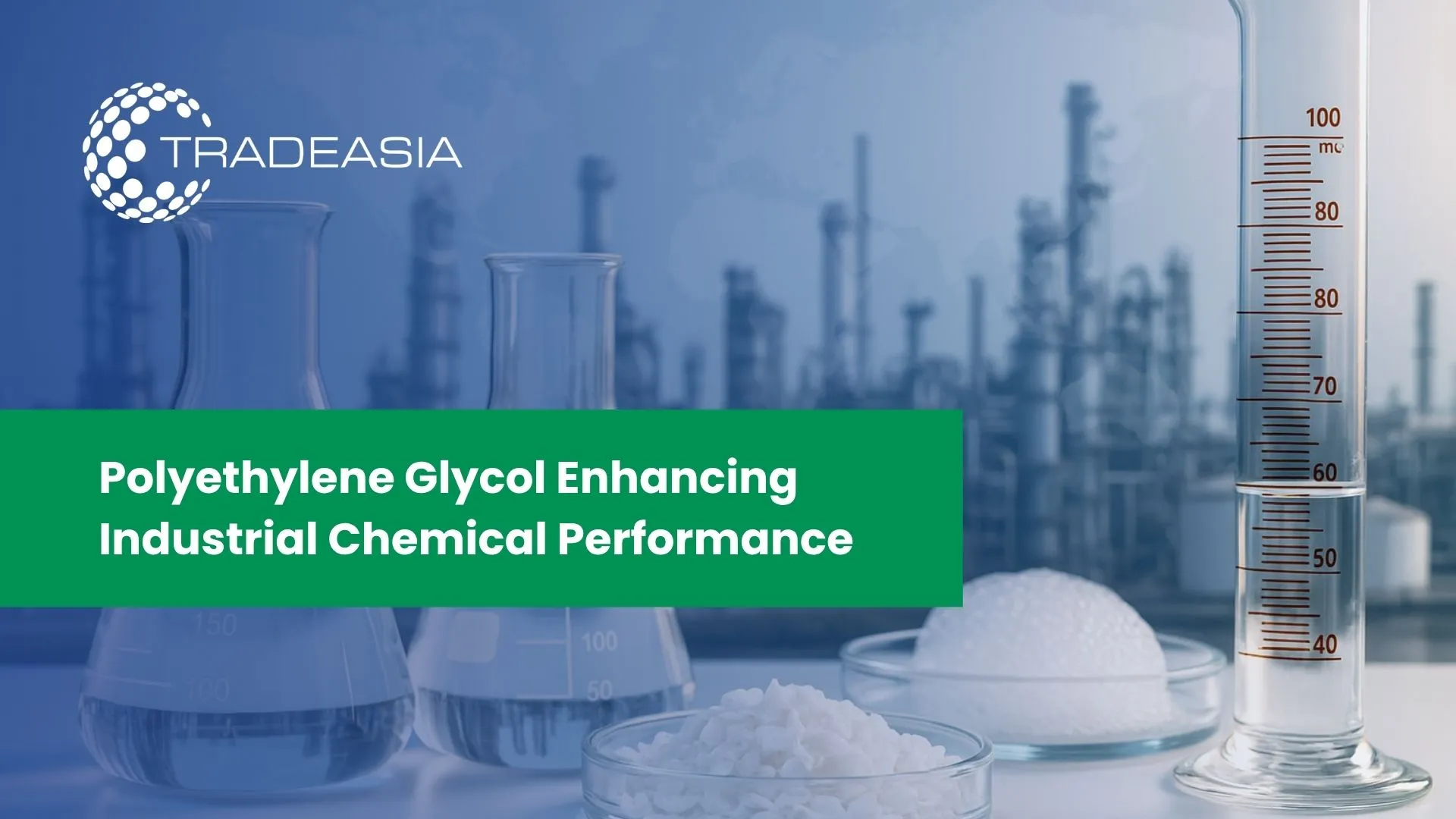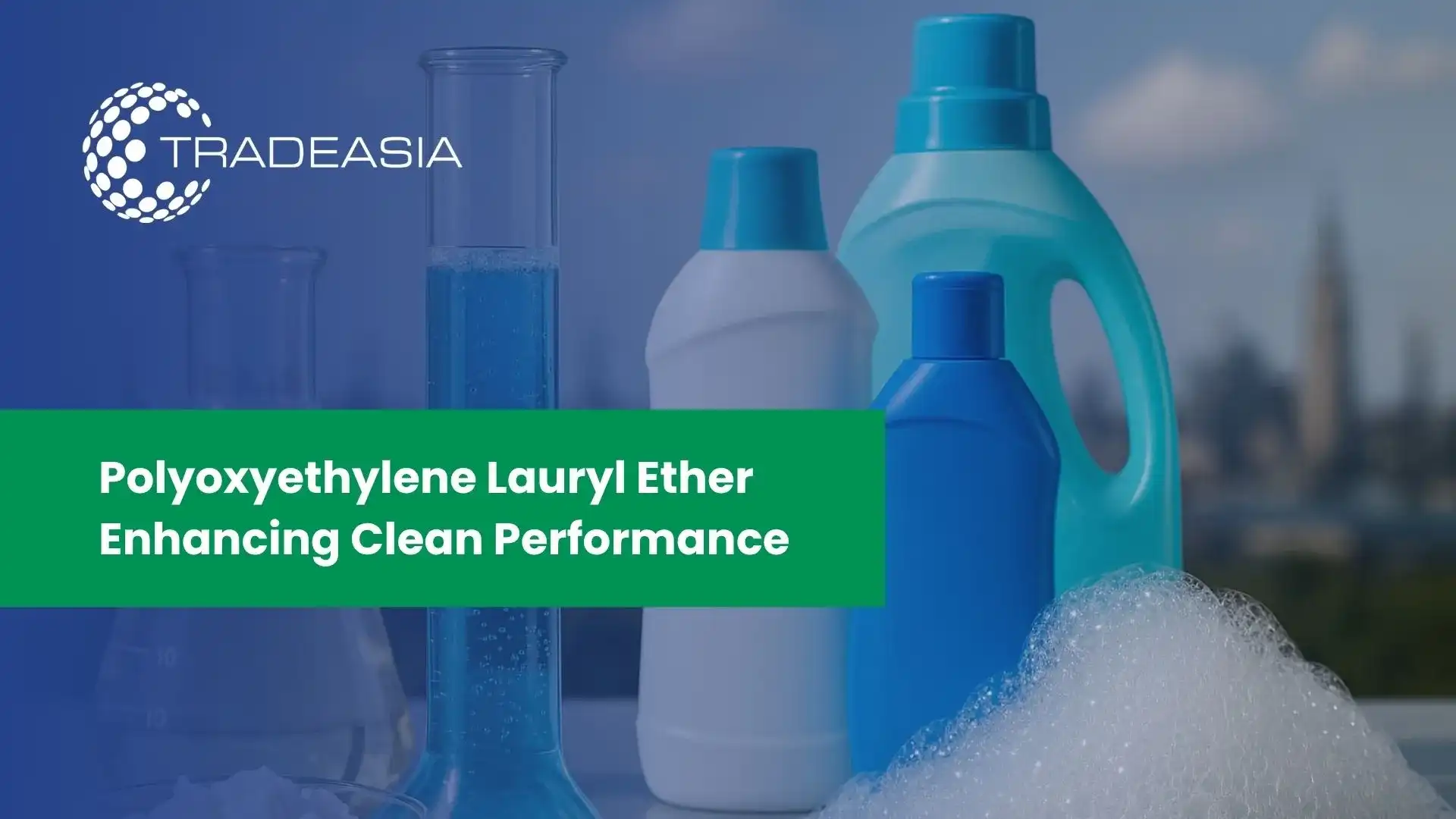Introduction to Surfactant Additives and Polyethylene Glycol
Surfactant additives are essential compounds used to alter the surface or interfacial properties of liquids, enabling better wetting, spreading, and emulsification. They are indispensable in products ranging from detergents and pharmaceuticals to paints and cosmetics. Among them, Polyethylene Glycol (PEG) stands out as one of the most versatile and widely used nonionic surfactants in the global chemical industry.
Polyethylene Glycol’s importance lies in its dual role as a functional chemical and formulation aid. It acts as a solubilizer, plasticizer, and stabilizer across industrial and consumer products. Its unique molecular structure allows it to bridge hydrophilic and hydrophobic components, enhancing performance and consistency.
In 2025, the demand for PEG and other surfactant additives continues to rise due to rapid industrialization, the growth of personal care markets, and the increasing shift toward environmentally friendly and biodegradable chemicals. As global manufacturers seek efficient surfactants with low toxicity and high adaptability, PEG remains a key focus of innovation and research.
Chemical Structure and Characteristics of PEG
Polyethylene Glycol (PEG) is a polyether compound derived from ethylene oxide polymerization. Its chemical structure, represented as H(OCH₂CH₂)nOH, enables wide variability in molecular weight typically ranging from 200 to 20,000 g/mol depending on the desired viscosity, solubility, and functionality.
PEG’s nonionic nature allows it to remain stable under different pH levels and temperatures, unlike ionic surfactants that may lose efficiency in acidic or alkaline environments. This property makes PEG compatible with various formulation systems, including pharmaceuticals, cosmetics, and detergents.
Furthermore, PEG is odorless, colorless, and water-soluble, making it highly suitable for industries requiring purity and consistency. Its molecular flexibility allows it to perform as both a primary surfactant and a co-surfactant, enhancing the performance of formulations that demand stability under dynamic environmental conditions.
Comparison Between PEG and Other Surfactant Additives
When comparing Polyethylene Glycol to other surfactant additives, several performance and market distinctions emerge.
-
PEG vs Nonionic Surfactants (Fatty Alcohol Ethoxylates)
While both PEG and fatty alcohol ethoxylates share nonionic characteristics, PEG offers broader compatibility across pH ranges and superior solubilizing ability. Fatty alcohol ethoxylates excel in foaming and emulsification but may have reduced stability under extreme conditions. PEG, by contrast, is often used as a secondary stabilizer to enhance formulation lifespan.
-
PEG vs Anionic Surfactants (Sodium Lauryl Sulfate, Linear Alkylbenzene Sulfonate)
Anionic surfactants provide strong cleaning and foaming properties, making them popular in detergents. However, they can cause skin irritation and have lower biodegradability. PEG, being nonionic and mild, is favored in pharmaceutical and cosmetic formulations that prioritize safety and environmental compliance.
-
PEG vs Amphoteric Surfactants (Cocamidopropyl Betaine)
Amphoteric surfactants combine mildness with compatibility but are costlier and less stable in alkaline systems. PEG provides a balance of cost efficiency and chemical resilience, allowing its use as a co-surfactant in formulations that demand both stability and gentle performance.
In summary, while other surfactant additives may outperform PEG in specialized functions, polyethylene glycol’s versatility and broad industrial acceptance make it a key additive across industries requiring both performance and sustainability.
Industrial Applications Across Key Sectors
The adaptability of Polyethylene Glycol has established its presence in multiple industrial and consumer sectors. In the pharmaceutical industry, PEG acts as a binder, solubilizer, and excipient in drug formulations. Its non-toxic nature ensures safe use in tablets, ointments, and controlled-release drug systems.
In cosmetics and personal care, PEG serves as a moisturizer, thickener, and emulsifier in lotions, shampoos, and toothpaste. Its hydrophilic nature enhances the stability and texture of water-based formulations, improving user experience.
Within detergent and cleaning products, PEG functions as a foam stabilizer and dispersant, improving the solubility of hydrophobic ingredients. It also enhances the rinseability of detergent residues, supporting high-performance formulations in both household and industrial cleaning solutions.
Market Insights and Demand Trends (2025 - 2030)
The global Polyethylene Glycol market is expected to grow significantly between 2025 and 2030, driven by expansion in pharmaceutical, cosmetic, and detergent sectors. According to Mordor Intelligence and Grand View Research, the market is projected to achieve a CAGR of 5.2–5.8%, reaching over USD 9 billion by 2030.
Asia-Pacific leads global consumption, with China, India, and Southeast Asia emerging as major growth engines due to large-scale production capabilities and expanding end-user industries. North America and Europe remain innovation hubs, focusing on specialty PEGs and bio-based variants that cater to sustainable manufacturing goals.
Key growth factors include increased demand for biocompatible surfactants, advancements in formulation chemistry, and the proliferation of eco-labeled products in consumer markets. As industrial sectors emphasize low-VOC and non-toxic additives, PEG is positioned as a pivotal material supporting both economic and environmental objectives.
Global Production and Regional Distribution
The production of Polyethylene Glycol is concentrated among major petrochemical and specialty chemical producers across Asia, Europe, and North America. Asia-Pacific dominates the supply chain due to low feedstock costs and proximity to fast-growing downstream industries.
Countries such as China, India, and South Korea lead in large-scale ethylene oxide polymerization facilities, enabling cost-competitive PEG production. Singapore and Malaysia serve as strategic trading and distribution hubs, linking Asian manufacturers to global buyers.
In Europe and North America, producers focus on high-purity and pharmaceutical-grade PEGs, supported by stringent quality control and regulatory compliance. This specialization ensures that these regions maintain a strong position in value-added markets such as healthcare and biotechnology.
Technological Innovations and Product Development
Technological innovations in Polyethylene Glycol manufacturing are enhancing performance, sustainability, and economic viability. Modern production facilities utilize continuous polymerization systems and catalytic optimization to improve yield and reduce environmental impact.
Recent developments include bio-based PEGs derived from renewable ethylene oxide substitutes, aligning with green chemistry principles. These sustainable alternatives exhibit similar functional properties while minimizing carbon emissions.
Additionally, PEG derivatives such as PEGylated compounds have revolutionized pharmaceutical drug delivery systems. By extending drug circulation time and reducing immunogenicity, these technologies highlight PEG’s expanding role beyond surfactant functions into advanced chemical applications.
Environmental and Regulatory Considerations
Environmental awareness and regulatory compliance are reshaping the global surfactant landscape. Polyethylene Glycol stands out for its biodegradability and low toxicity, making it a preferred alternative to petroleum-based surfactants.
Regulatory bodies such as EPA (United States) and ECHA (Europe) classify PEG as safe for use in both industrial and consumer applications when handled under proper guidelines. However, efforts continue to improve wastewater biodegradation rates and minimize manufacturing emissions.
Many global producers now comply with ISO 14001 environmental management standards and REACH regulations, ensuring transparent supply chains and eco-responsible sourcing. This compliance reinforces PEG’s reputation as a sustainable solution in chemical formulations.
Competitive Landscape and Key Players
The global Polyethylene Glycol market is moderately consolidated, featuring a mix of multinational corporations and regional producers. Key players include:
These companies focus on expanding production capacity, developing bio-based variants, and investing in R&D for high-performance formulations. Strategic partnerships and acquisitions are also reshaping global PEG distribution networks to meet the rising demand for sustainable surfactant solutions. Emerging regional players in Asia are increasingly integrating vertically from ethylene oxide production to specialty chemical formulation to strengthen cost competitiveness and export capabilities.
Conclusion
Polyethylene Glycol remains a cornerstone of modern surfactant chemistry, balancing performance, safety, and sustainability. Its ability to function across diverse industries from pharmaceuticals and personal care to industrial cleaning demonstrates unmatched adaptability.
While other surfactant additives may excel in niche applications, PEG’s consistent quality, stability, and regulatory acceptance make it indispensable in today’s environmentally conscious chemical landscape. Between 2025 and 2030, innovations in bio-based production and formulation design will further expand its relevance in global markets.
Ultimately, Polyethylene Glycol’s value lies in its versatility bridging industrial performance with sustainability, ensuring that the surfactant industry continues to evolve toward cleaner, safer, and more efficient chemical solutions. To explore reliable sourcing options or collaborate on sustainable Polyethylene Glycol (PEG) solutions for detergent and industrial applications, contact our chemical experts at Detergent Chemicals Asia.
References


Leave a Comment